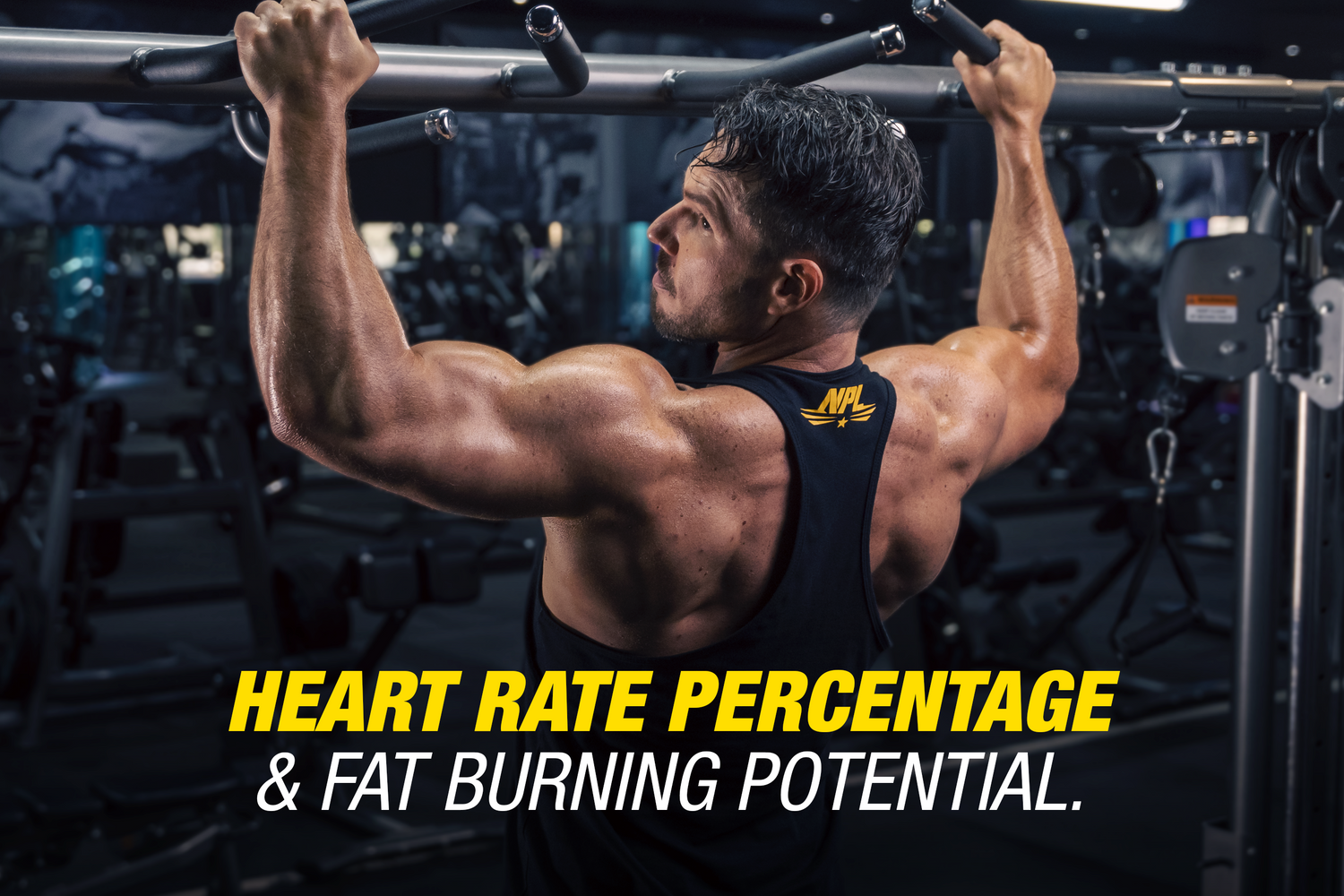Exercise Heart Rate and its Impact on Fat Burning

When it comes to working out, understanding your heart rate and how it affects your body is crucial to achieving your fitness goals. Heart rate is measured in beats per minute (BPM), and the percentage of your maximum heart rate (MHR) is a valuable tool in determining the most efficient way to burn fat during exercise. In this blog post, we will explore the different heart rate percentage zones and how they relate to various types of exercise.
Firstly, what exactly do we mean when we say maximum heart rate? This is the highest heart rate an individual can achieve during exercise. It varies by age and gender, with the general rule being that your maximum heart rate is approximately 220 minus your age, again this is just an estimate and may vary. As an example, if you're 30 years old, your max heart rate would be around 190 BPM (220 - 30 = 190). Knowing your max heart rate is important because it helps determine target heart rate zones during exercise.
The first heart rate percentage we will discuss is the anaerobic zone, which is >85% of your max heart rate. This level of intensity is typically achieved during high-intensity interval training (HIIT) or sprinting. During anaerobic exercise, your body requires energy faster than oxygen can be delivered to your muscles, resulting in the production of lactic acid. While this zone may not be sustainable for long periods, it is an excellent way to increase your metabolism and improve your overall fitness. Additionally, anaerobic exercise is great for burning calories even after you've finished your workout, thanks to the after-burn effect. This means that your body will continue to burn calories even when you're not actively exercising, making it an efficient way to burn fat.
Next up, we have weightlifting or resistance training, which has average of roughly 70-85% range of max heart rate. Weightlifting is an excellent way to build muscle mass, which in turn helps increase your metabolism and burn fat more efficiently. Compound exercises like squats, deadlifts, and bench presses are great examples of exercises that can help you achieve this level of intensity. The one difference for this type of training is the duration of sets, typically an exercise can be completed in roughly 60 seconds followed by 2 – 3 minutes of rest. These long periods of rest will significantly lower your heart rate once your body adapts to weight training. As with anaerobic exercise, the after-burn effect is significant, making weight lifting a great way to burn fat.
Finally, we have aerobic exercise, which falls between 50-75% of MHR. This is the zone where your body is using oxygen to produce energy for your muscles. Examples of aerobic exercise include running, cycling, and swimming. During aerobic exercise, your body uses stored fat as fuel, making it an excellent way to burn fat. This zone is ideal for longer workouts, as it's a sustainable level of intensity that can be maintained for longer periods. Aerobic exercise is also great for improving cardiovascular health and overall fitness.
It's worth noting that while these percentages are useful, everyone's body is different and they should be treated as guidelines. Your heart rate may be higher or lower than what's expected for your age, and your body may respond differently to various types of exercise. It’s also important to consider your overall fitness level and any health conditions you may have before starting a new exercise regimen. Always consult a medical professional before beginning a new exercise routine.
By incorporating a variety of exercises into your routine and challenging yourself to reach different heart rate zones, you can efficiently burn fat and improve your overall fitness. Whether you're looking to build muscle, increase endurance, or simply live a healthier lifestyle, understanding your heart rate is an essential tool in achieving your goals.
References:
Carey, D. G. (2009). Quantifying differences in the “fat burning” zone and the aerobic zone: implications for training. The Journal of Strength & Conditioning Research, 23(7), 2090-2095.





